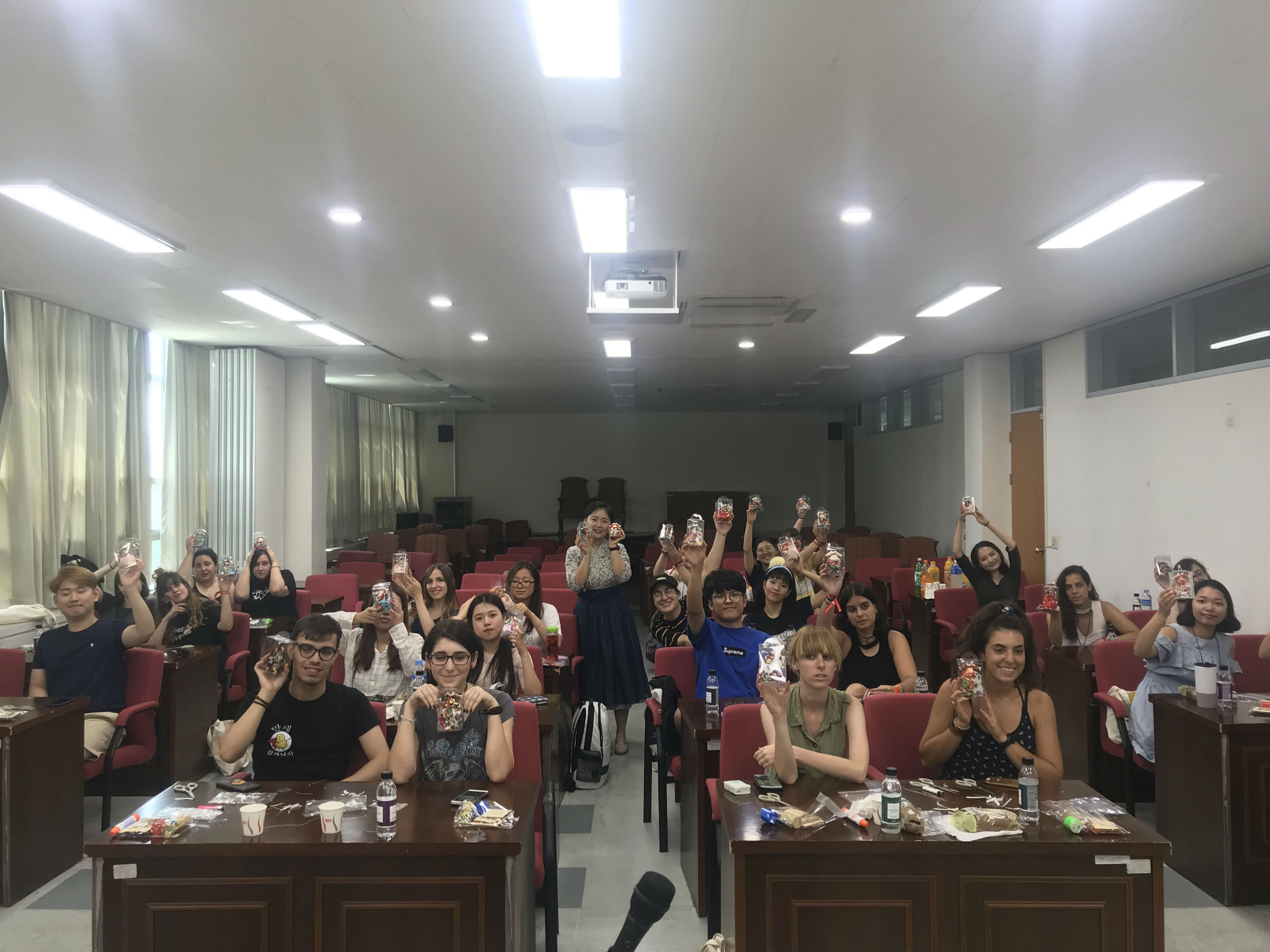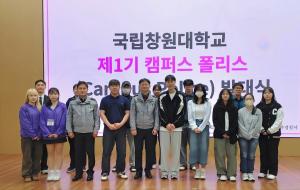A country located in Europe with a rich history and a distinct language. Many readers might be able to name some countries; however, the country mentioned above is Spain. In the city of Salamanca located outside of Madrid, Spain; there are some renowned features especially in the aspects of antiquity, cuisine and culture. It also has one of the oldest universities in the world, the University of Salamanca, established in 1218. This particular University agreed to let 19 of its students in the Korean language and literature course participate in a foreign exchange program held at Changwon National University. All this is all be possible because the two institutions have a partnership.
Kang, Sae-Rom, the head of this foreign exchange program who is in the department of international affairs expounded the details of the event to provide a better understanding of how this exchange came into place.
Q: Who are the participants of this foreign exchange program?
A: For the Spanish students, all 19 of them are under the course of Korean language and literature and that is one of the reasons this program was made possible. Since they can speak Korean, the language barrier was gone and interaction with CWNU students was possible. As for the Korean students, we have around 40 voluntary participants who are divided into two groups to accommodate all the activities in the program.
Q: What is the main goal of this program?
A: Our main goal was to let the students of Salamanca experience studying in Korea to widen their view on their major. For our students, it was for them to witness Spanish culture and language because right now there is no Spanish course in CWNU. Thus, it was a great alternative for our students to have a better perception of what the people and cultures are like outside of Korea. In addition, it was a trial, so that the partner colleges can see the potentials of this project and conduct more if possible.
Q: What activities do the students participate in and how does this program help our university?
A: In the morning program, the students go to a classroom located in the consortium, then the Spanish students teach Korean students basic Spanish in Korean. The students from Salamanca prepare their own teaching materials each week and they teach the Korean students and interact with them as well. Then, after lunch, the afternoon program begins. The students go on a cultural visit to different tourist attractions, enterprises, and festivals as well. This exchange program helps the university by improving international relations, and it also helps the institution receive a positive outlook from partner colleges.
The exchange program started on July 23 and it was officially over on August 17. In this time, the Spanish and Korean students underwent a series of tasks which allowed them to connect to each other and a set of activities which enabled them to discover new cultures. This experience was truly remarkable for anyone who participated. Two Spanish students were interviewed to get a glimpse of the experience that they had in the program.
David Vazquez and Soraya Belinehon were the interviewees chosen from the Spanish students, and a series of questions regarding the program were asked to receive their insights.
Q: What were some of the noticeable differences that you observed when you came to Korea?
D: In Korea, the schedule for meals is very early. I have never eaten at such an early time in Spain, so it was a bit difficult to adjust at first. I was hungry even after dinner because of the meal times.
S: The convenience stores were fascinating for me because in Spain, you can only find supermarkets or small marts which are distant from the university; but in Korea, you can find a convenience store which has all the essentials nearby.
Q: What were some of the difficulties that you faced when teaching Spanish to the Korean students?
D: Expressions in Korean, because even if we are fluent in Korean, there is still a limit on our vocabulary especially when we are teaching. We solved this problem by saying the words that we couldn’t recall at the moment in English, and thankfully, the students understood.
S: The anxiety coming from the lack of experience was really challenging. We have never taught Spanish before, so we had no idea on how to approach the students and I was worried whether they would proceed well with the class and learn from our lectures, but I think most of the students understood since they asked what they did not comprehend during the one on one time we had after the main class was done in the morning.
Q: What were some of the most memorable moments in the Cultural visits that you had in the afternoon?
D: For me, it was when we went to Hanok village in Jeonju because the scenery was amazing and we all got to dress up in Hanbok and take pictures. Then we also ate delicious food like bibimbap. Overall, I really liked the traditional atmosphere of the place and I would visit there again if I had the chance.
S: I really liked our visit to Cheongdo to witness the provence light festival which was really beautiful and nothing like I have ever seen before. We also rode a zip line and found our way out of the labyrinth of mirrors. It was a really fun day and I really loved the experience there.
Overall, the first ever foreign exchange student program hosted by Changwon National University through the partnership of the University of Salamanca finished with a positive outcome. The students from Salamanca were able to successfully demonstrate their Korean skills through teaching basic Spanish to the Korean students, and also experience firsthand Korean culture and traditions. The students of Changwon also benefitted from this program by getting the chance to interact with students from another country and learning a new language from them. Therefore, this program benefitted everyone, and hopefully,
 |
| A Class activity held in the Consortium |
 |
| In Jeonju, the students got to witness Korean history and culture |
 |
| Traditional Fan making as a part of the cultural activities |
 |
| Students from Salamanca dressed up in Hanbok in Hanok village |
in the future, Changwon National University will head on to partnerships with other countries so that its students will become true global leaders.
By Baik Jong-Min, Cub Reporter Jmbae1025@gmail.com
<저작권자 © The Campus Journal, 무단 전재 및 재배포 금지>

 Shrinkflation, Consumer Deception
Shrinkflation, Consumer Deception




